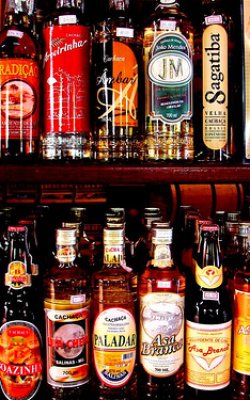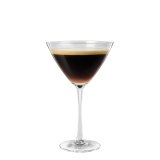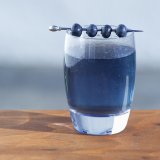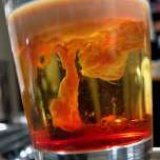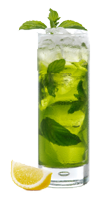This article is timely, a celebration of the national drink of Brazil as the grand finale of Rio’s famed Carnival occurs. Cachaça isn’t well known in the United States but it is famed in its native Brazil, where the average citizen consumes almost two gallons a year for a nationwide total that exceeds 350 Million gallons per year. These impressive numbers make cachaça the third most consumed liquor in the world, behind vodka and soju.
Cachaça is a raw sugar can brandy and is often confused with or considered to be rum. We can guarantee you that it is not! Rather, raw sugar cane is distilled in a fashion similar to the distillation of brandy. No one knows for sure when cachaça was first fashioned but it is believed that its roots go back to the 1500s to the slave and sugar culture of Brazil. Regardless of how cachaça got its start, it’s certainly here to stay and growing in popularity as Brazil recently began exporting this popular national symbol.
When we think of cachaça, we think of its variety. There are thousands of distillers across Brazil and each distiller has its own formula. There are small distillers in towns and villages across Brazil who produce cachaça that is similar to moonshine. These small distillers often supply their own use and those close to them, sometimes selling it to those lucky travelers who chance upon them or those in the know. There are artisan distillers that remind me of the famed whisky makers of Scotland. They pride themselves on the unique taste and characteristics of their product. These distillers age the cachaça in a variety of woods, some unique to Brazil and some not, that impart unique color, smell and taste to the cachaça. These bottles are meant to be sipped like a fine Scotch and are also priced like fine Scotch – some selling in their native Brazil for over $400 per bottle. Finally, there are distillers who distill and bottle according to age-old traditions. These distillers take the cachaça straight from the still and bottle it. It’s this cachaça that I think of often when I want to whip up a caipirinha.To demonstrate the diversity of cachaça, we did a taste test of an artisan cachaça that we picked up on a trip to Brazil (and purchased in Sao Paolo) and a bottle of cachaça that we purchased at a large liquor and wine shop in the United States. Lucky for us, we have had the amazing opportunity to travel to Brazil and purchase the artisan cachaça, as it is very difficult to find in the United States (note – not the particular brand that we tasted but any artesian cachaça). As a side note, we at drinkoftheweek love Brazil and would encourage anyone who as the opportunity to travel there to seize the opportunity and use it as an excuse to indulge in sampling cachaça (in all of its glorious diversity), drink caipirinhas and soak up the amazing culture!
The artisan cachaça is Espirito de Minas produced by Aquardente in Fazenda Santa Luzia, Sao Tiago, Minas Gerais (Minas Gerais is the breadbasket of Brazil and the agricultural heartland). This cachaça was aged for 18 months (from what I could surmise from my limited ability to read Portuguese) and its alcohol content was 43%. We paid approximately $50 for this bottle a few years ago when the United States dollar was a bit stronger against the Brazilian real than it is today. You could see from the bottle that the liquor was a light tawny brown color, which showed that it was aged in wood as cachaça from the still is pure in color, like vodka. The cachaça retained its color and was very clear when poured and smelled of wood (we couldn’t identify the type), raisins and other dried fruit. The taste was smooth (much smoother than the traditional cachaça that was a few points lower in alcohol content) and reminded me of brandy, cognac and armagnac (and earning its moniker of the sugar cane brandy). The cachaça also retained a slight taste of wood and dried fruit but not to the extent that it had on the nose – the actual taste was much more subtle and nuanced.
The second cachaça tried was Ypioca Crystal, which was 100% produced on the distiller’s estates. However, we could not surmise from the bottle where those estates were and were the cachaça was produced. The color was clear and the alcohol content was 39%. We paid approximately $20 for this bottle and it was purchased with the intent of turning it into a number of caipirinhas. The cachaça was clear (in color and texture) when poured and the smell reminded me of tequila (similar to the citrusy smell that some un-aged tequila show). The taste was highly alcoholic (even though it had a lower alcohol content than the artisan cachaça) with overtones of citrus. While I would not recommend this cachaça for sipping (and it’s not sold as a sipping liquor), I do feel that it would be a good bottle for mixing drinks.
Our review of the Ypioca Crystal takes us to the caipirinha (never easy to say or spell), which we often wax poetic over. I can’t remember when I had my first caipirinha but I do know that it was somewhere in San Francisco (I am embarrassed to admit this because I still remember where I had my first Sidecar (one of the few drinks that rival the caipirinha for my affection) – it was the Bix in San Francisco and it was unforgettable). But, I do remember where I had the most amazing caipirinha and it’s also where we learned to whip up a wicked one. We were on vacation in old San Juan, Puerto Rico and on a sultry night, we went to the Blue Parrot restaurant. I remember that the food was amazing but it was the caipirinha that changed my life. The bartender was clearly a professional (and this was before the full emergence of the mixologist movement) and imparted that the key to an amazing caipirinha was the ingredients – good cachaça, juicy limes, clean, shaved ice and most importantly, super-fine sugar (often the most missed ingredient). After that trip, we went home and worked on it until we perfected the caipirinha (but it was still never quite as good as the ones that we had at the Blue Parrot).
Here is our recipe for the perfect caipirinha (we make so many that its hard to write down a recipe – it’s all memory and taste at this point)

• Lime – cut each lime into at least 1/8th (the smaller the lime wedges, the more juice and essence are muddled into the drink)
• Cachaça – 1 to 2 ounces
• Super-Fine Sugar (this can be hard to find so use baking sugar, which is also super-fine)
• Ice – fresh and shaved is the best (tastes and melts the best)
Take 1-2 limes (again, its to taste and I usually add more lime since I am a lime fanatic) and add to a rocks glass. Add sugar (usually 1 to 2 teaspoons but I usually cover the bottom of the glass and the limes) and muddle vigorously until all the lime pieces are mashed (and the lime and sugar are like a soupy paste). Add the cachaça and taste. If you want more lime or sugar, add and muddle (it will not hurt the drink). Fill the rocks glass with ice and allow a few minutes for the ice to start melting and diluting the alcohol mixture. Please purchase a muddler for this exercise – I can guarantee you from experience that a fork doesn’t cut it.
Since my first exposure to the caipirinha, flavored caipirinhas have come into vogue. Essentially pick your favorite fruit or even vegetable (we generally think of the cucumber here) and substitute for the lime.
If you don’t like cachaça but you love vodka, then whip up a caprioska, which is also very popular in Brazil. Substitute vodka for the cachaça.
If you aren’t able to celebrate Carnival in Rio this year, you can still bring part of the celebration to you. Buy a bottle or two of cachaça, invite over a few friends and whip up caipirinhas for the crowd. It might even inspire you to book those tickets to Rio for next year! Enjoy!

